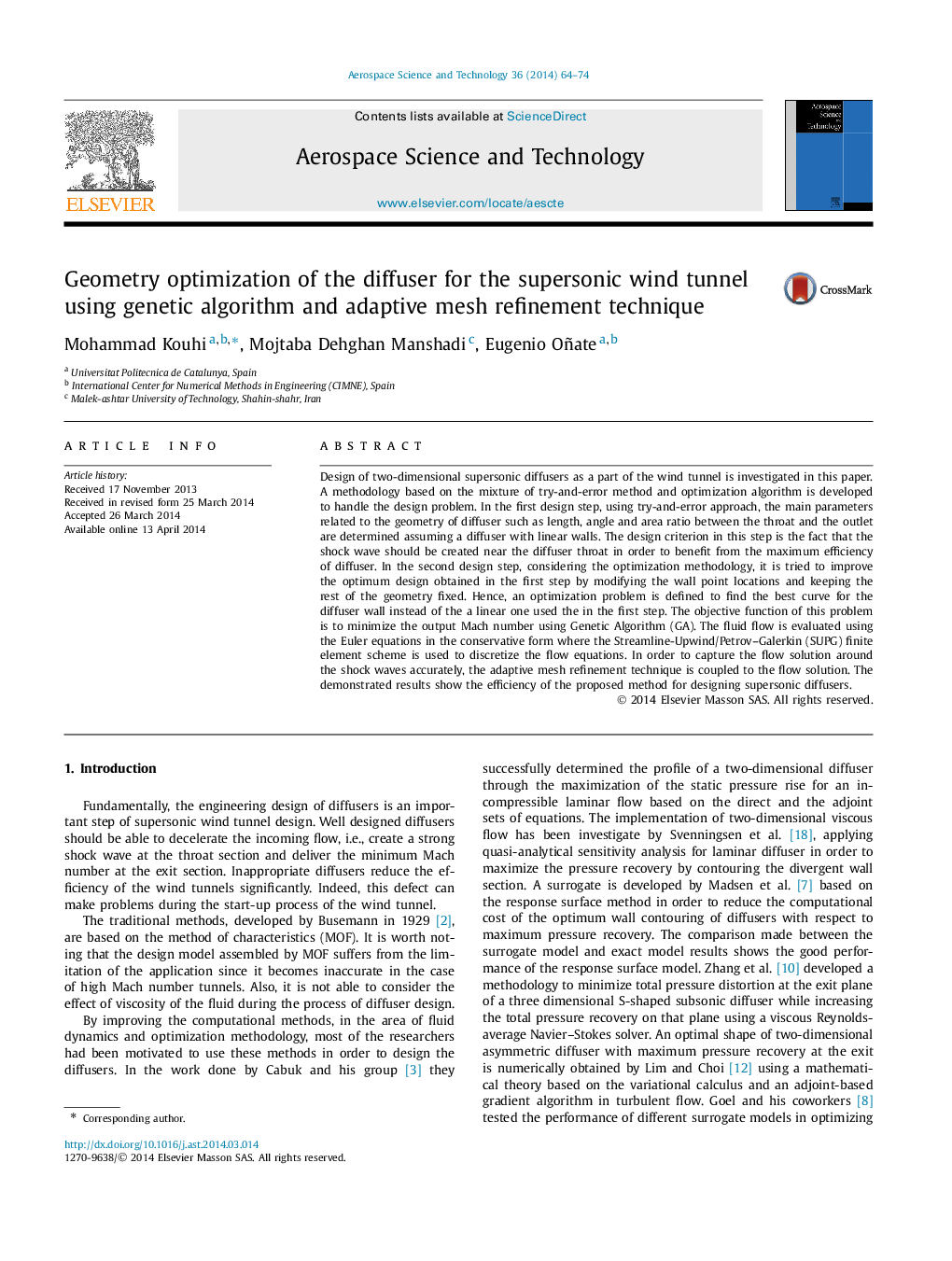| Article ID | Journal | Published Year | Pages | File Type |
|---|---|---|---|---|
| 1718067 | Aerospace Science and Technology | 2014 | 11 Pages |
Design of two-dimensional supersonic diffusers as a part of the wind tunnel is investigated in this paper. A methodology based on the mixture of try-and-error method and optimization algorithm is developed to handle the design problem. In the first design step, using try-and-error approach, the main parameters related to the geometry of diffuser such as length, angle and area ratio between the throat and the outlet are determined assuming a diffuser with linear walls. The design criterion in this step is the fact that the shock wave should be created near the diffuser throat in order to benefit from the maximum efficiency of diffuser. In the second design step, considering the optimization methodology, it is tried to improve the optimum design obtained in the first step by modifying the wall point locations and keeping the rest of the geometry fixed. Hence, an optimization problem is defined to find the best curve for the diffuser wall instead of the a linear one used the in the first step. The objective function of this problem is to minimize the output Mach number using Genetic Algorithm (GA). The fluid flow is evaluated using the Euler equations in the conservative form where the Streamline-Upwind/Petrov–Galerkin (SUPG) finite element scheme is used to discretize the flow equations. In order to capture the flow solution around the shock waves accurately, the adaptive mesh refinement technique is coupled to the flow solution. The demonstrated results show the efficiency of the proposed method for designing supersonic diffusers.
